
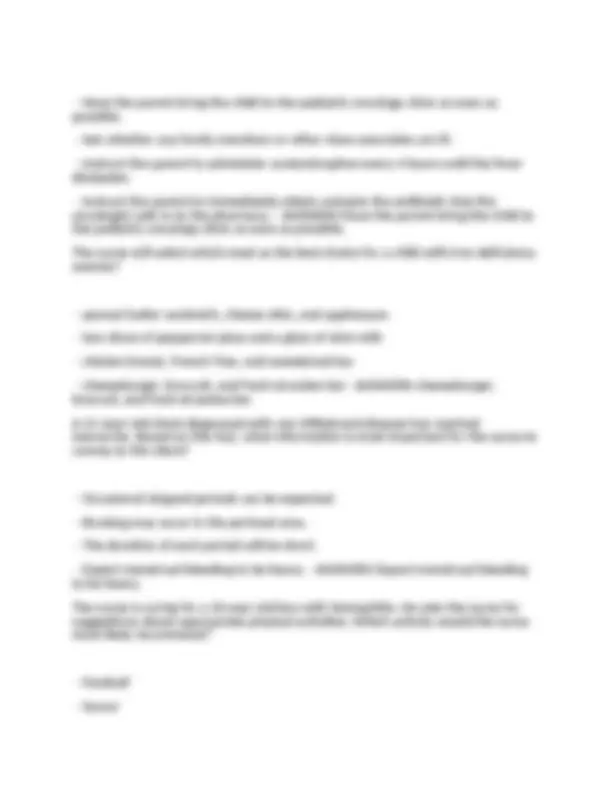
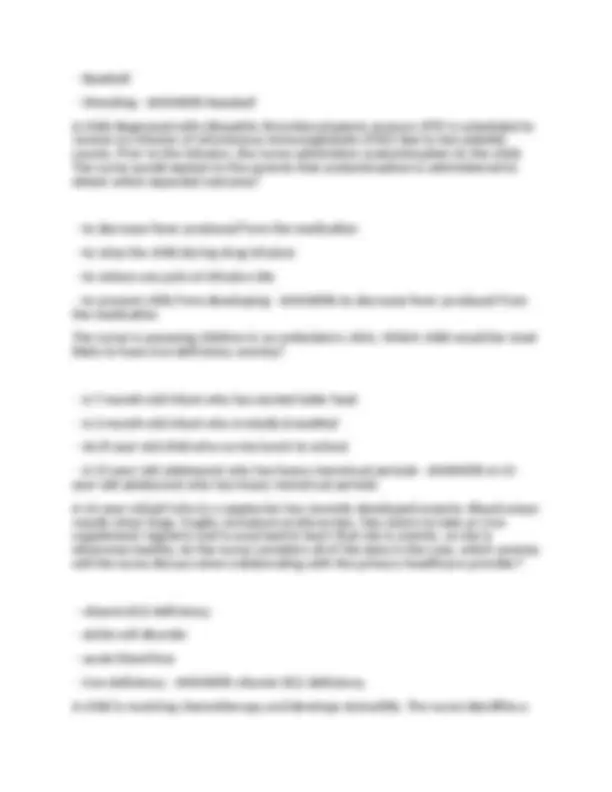
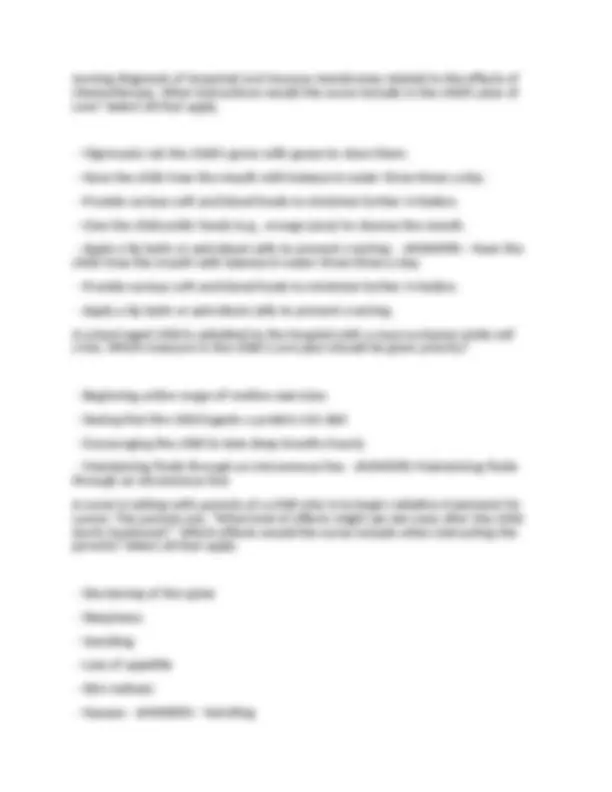
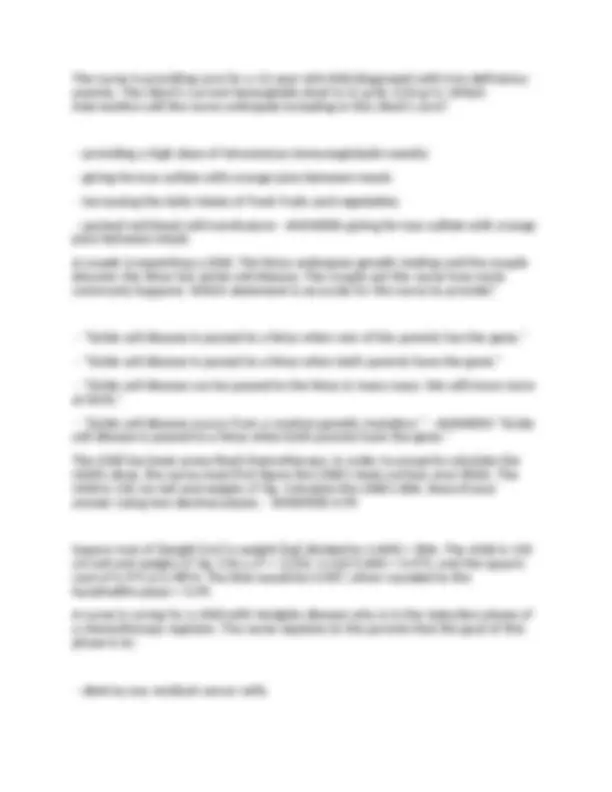
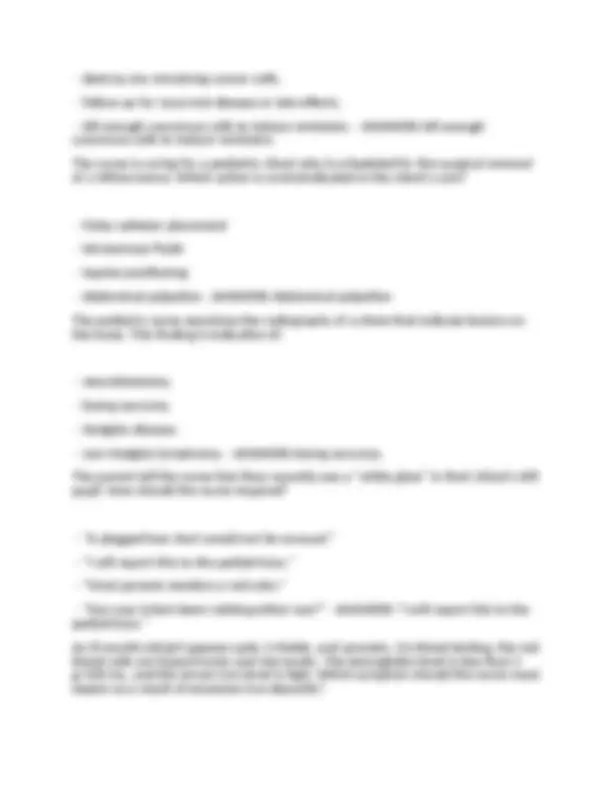
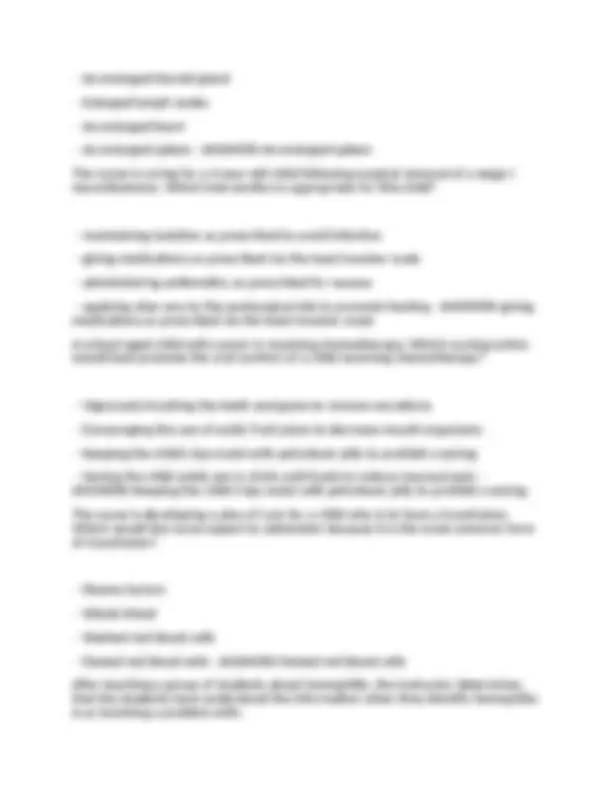
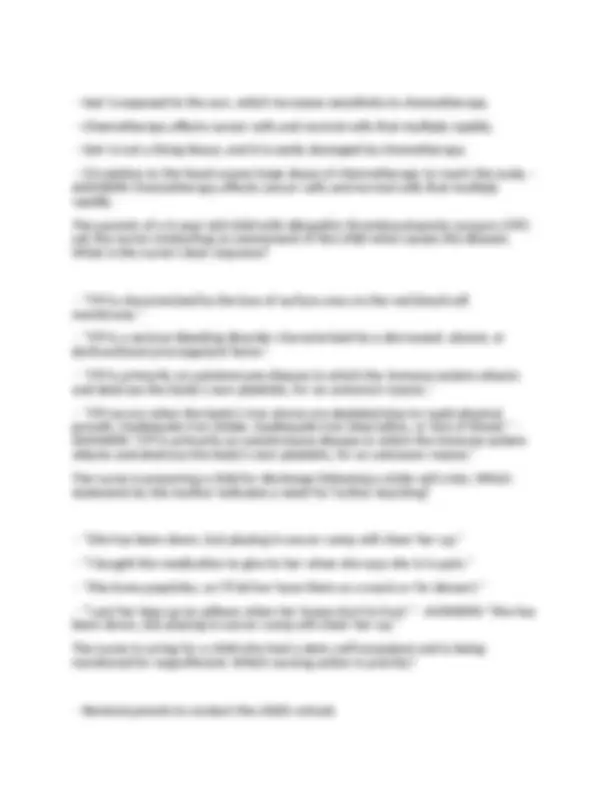
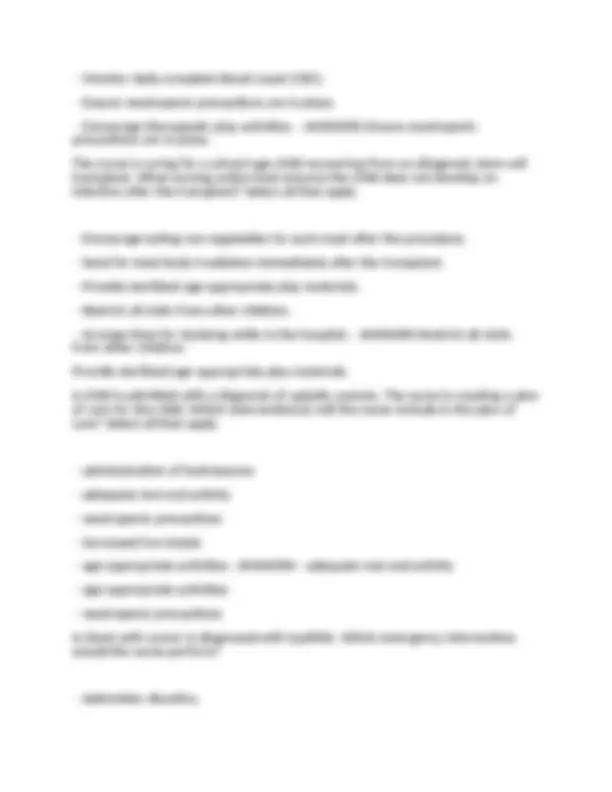
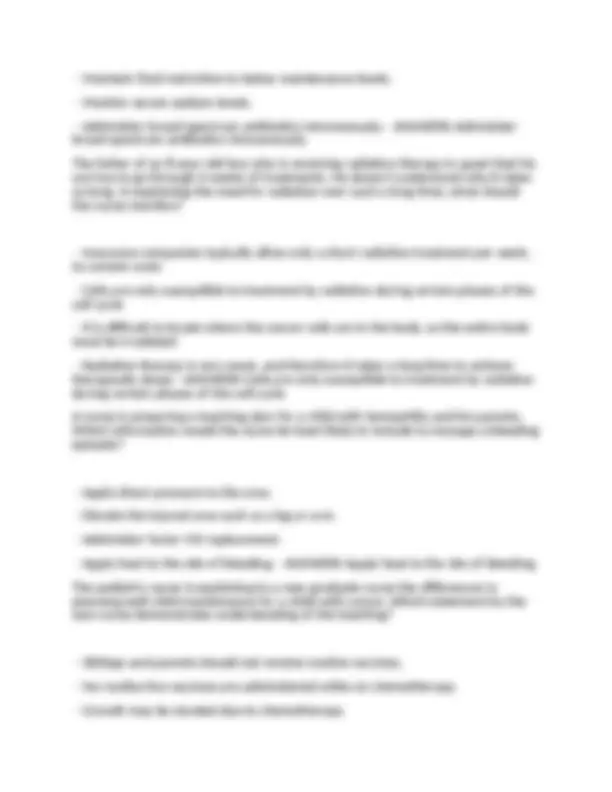
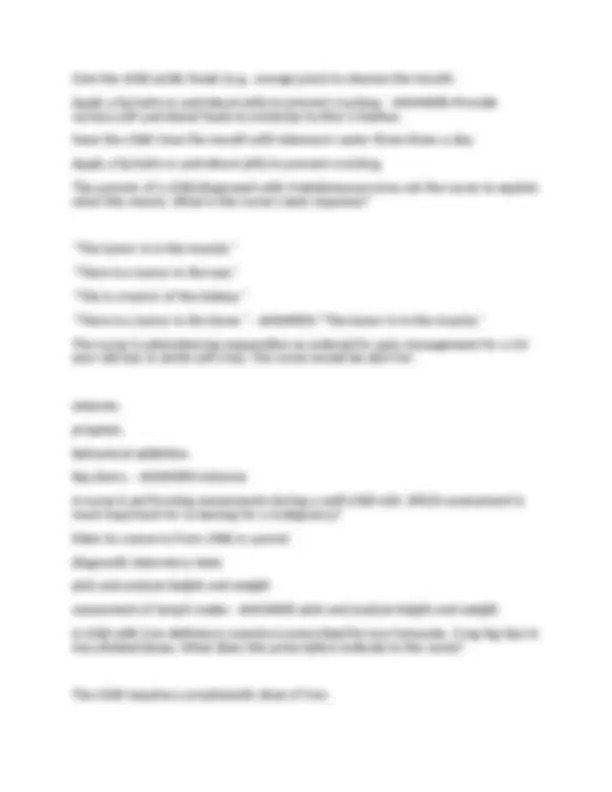
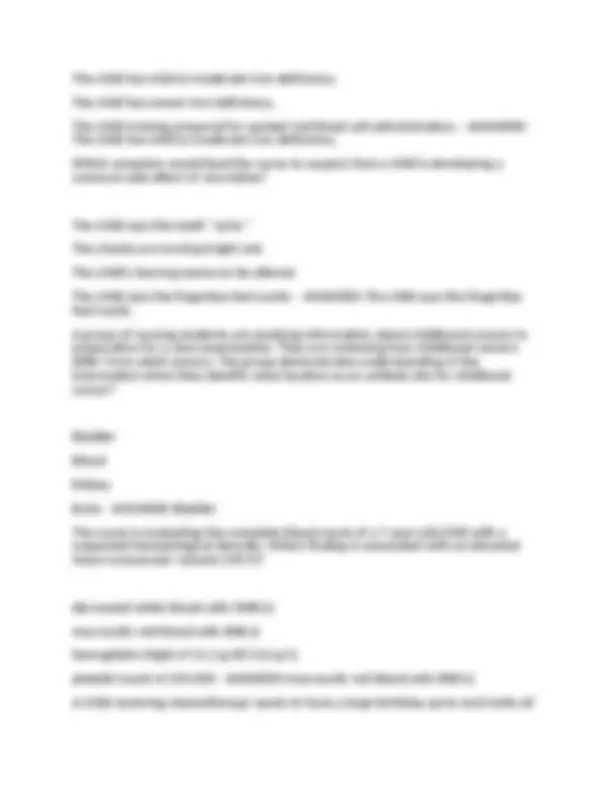
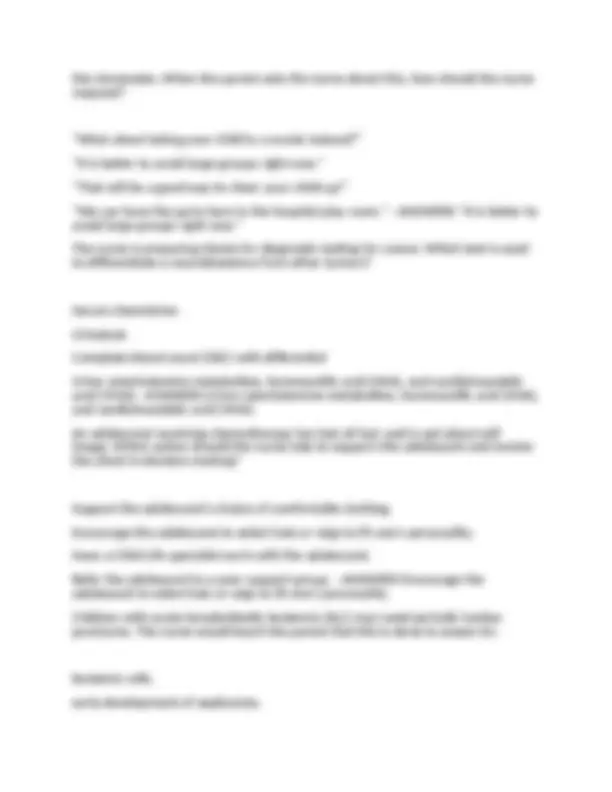
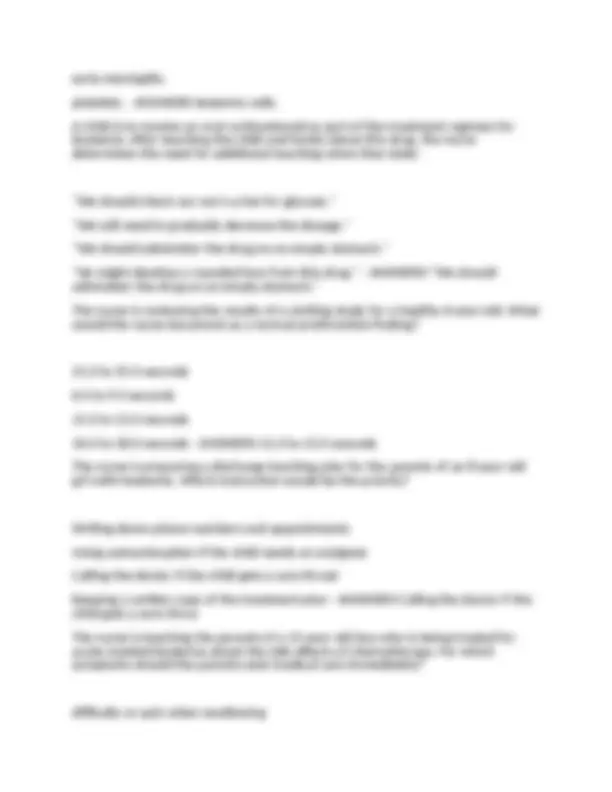
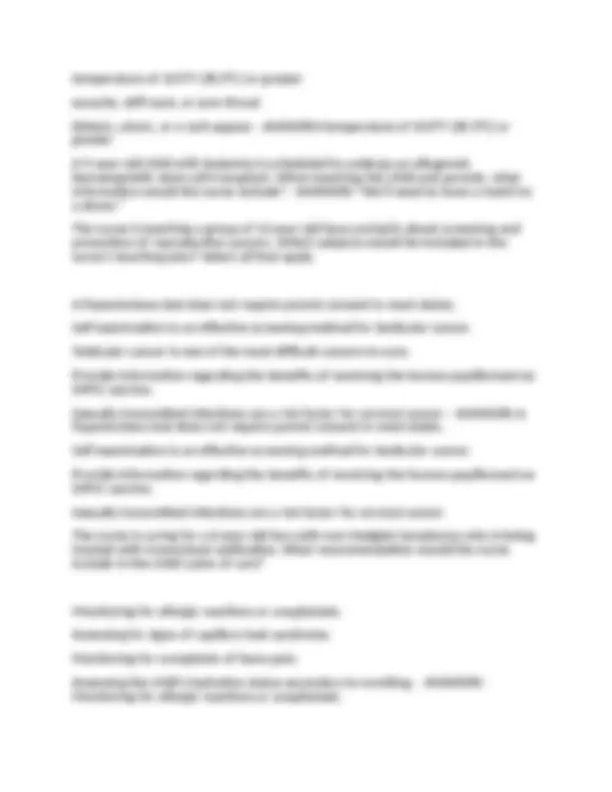
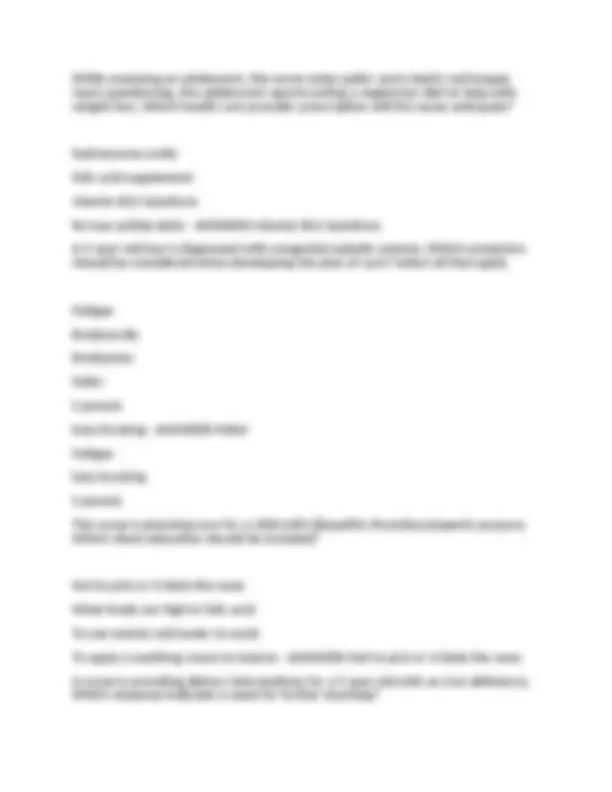
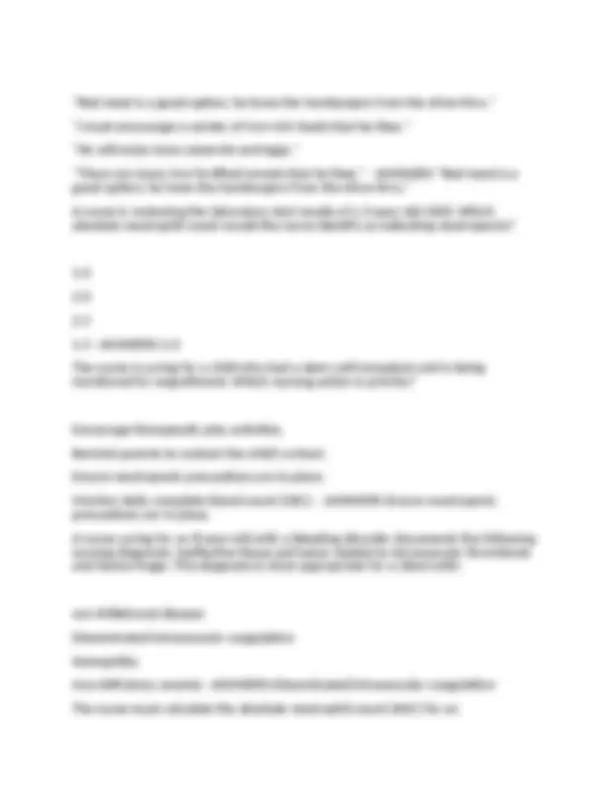
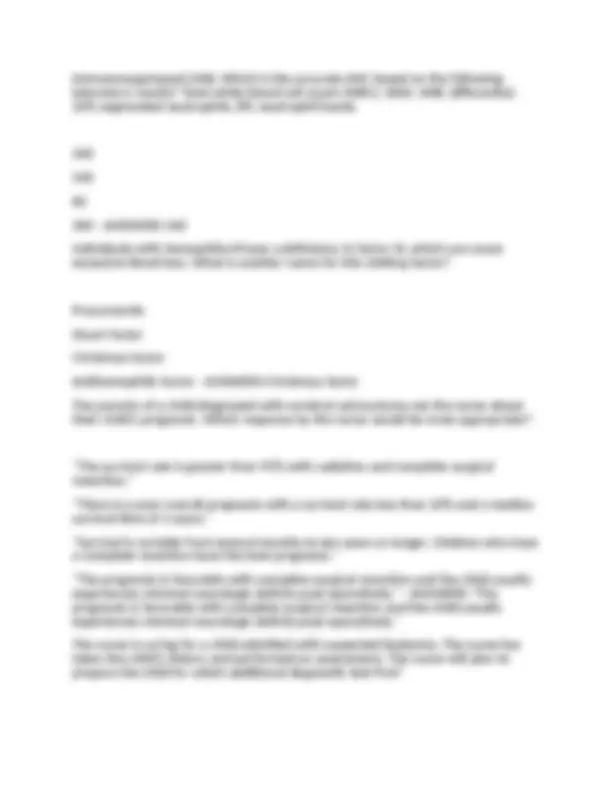
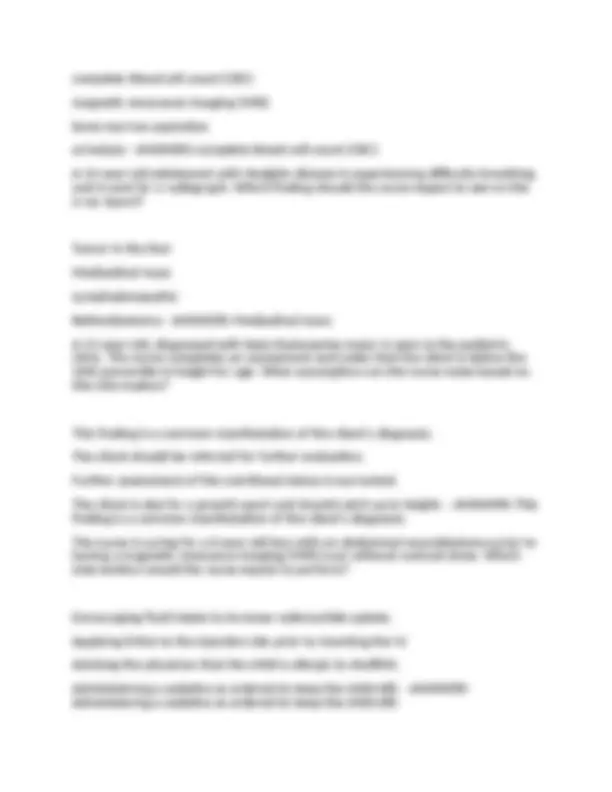
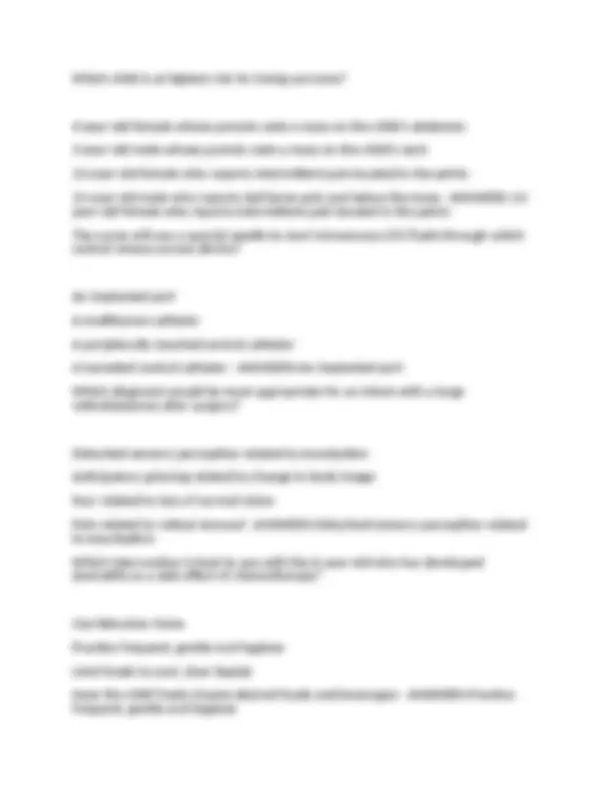
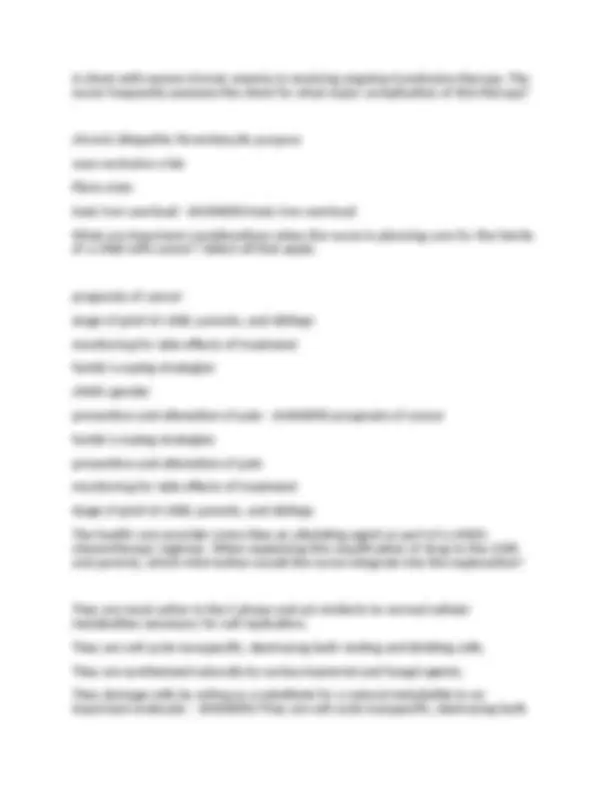
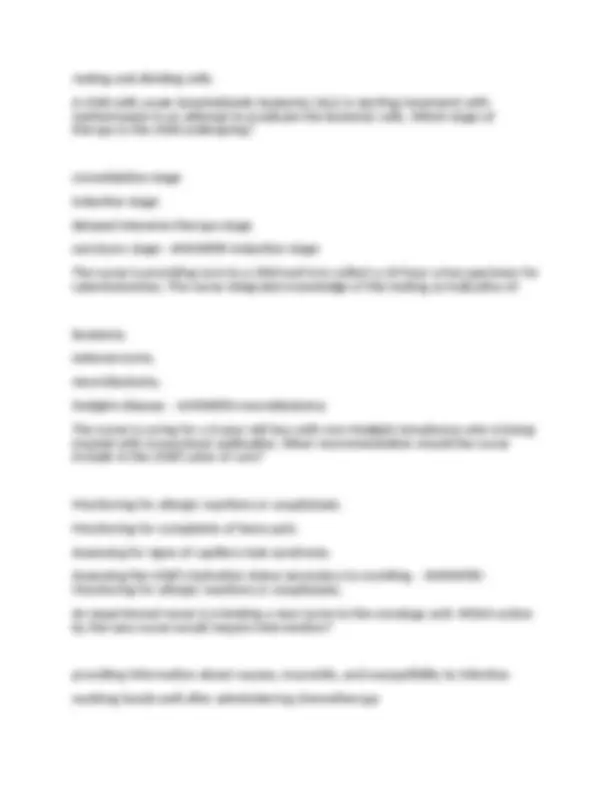
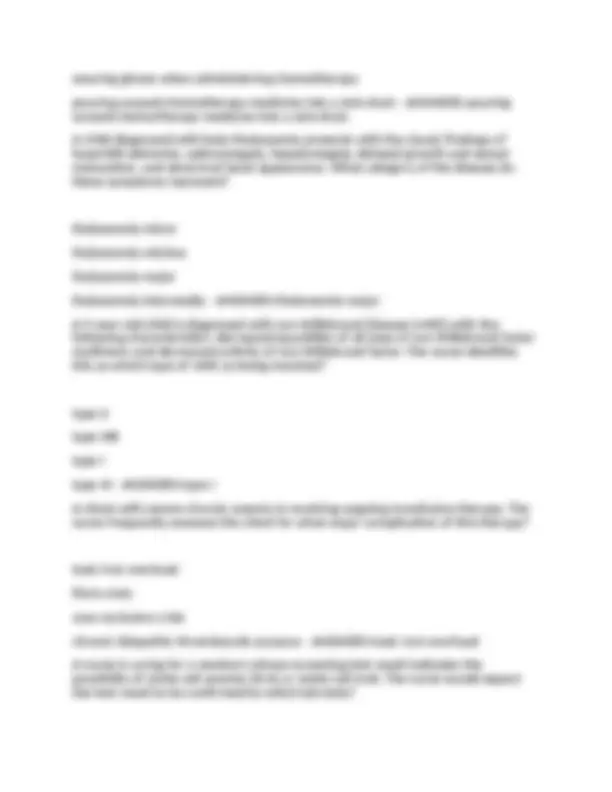
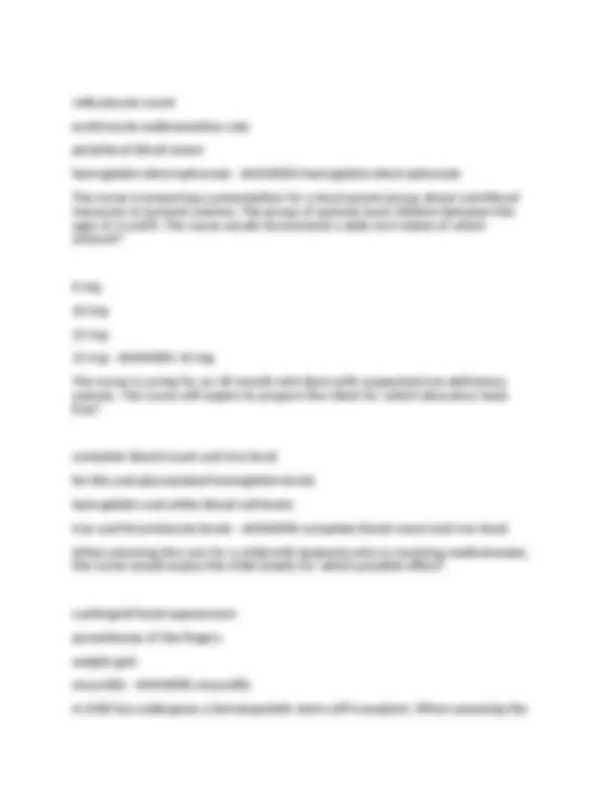
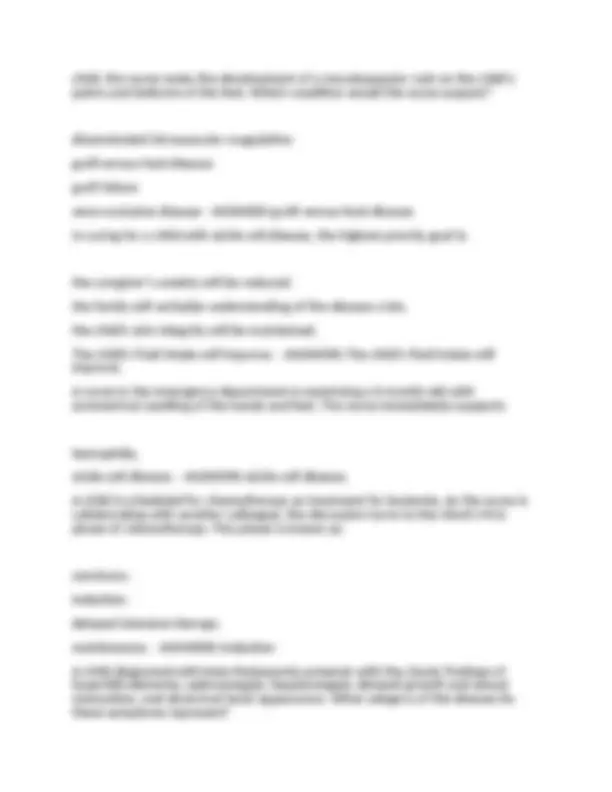
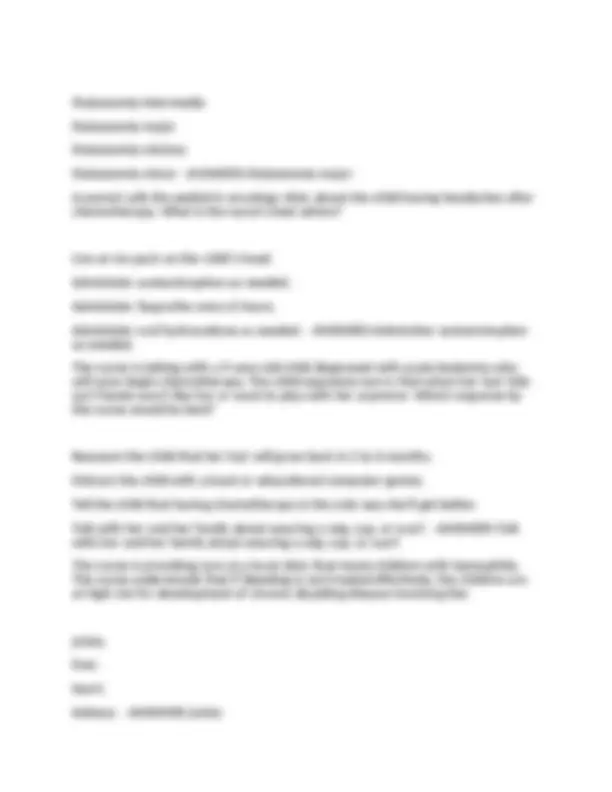

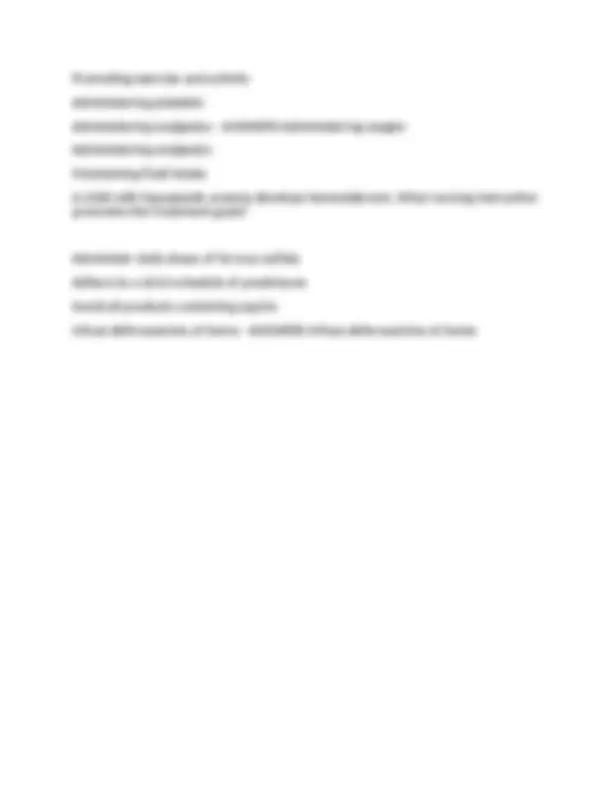


Study with the several resources on Docsity

Earn points by helping other students or get them with a premium plan


Prepare for your exams
Study with the several resources on Docsity

Earn points to download
Earn points by helping other students or get them with a premium plan
Community
Ask the community for help and clear up your study doubts
Discover the best universities in your country according to Docsity users
Free resources
Download our free guides on studying techniques, anxiety management strategies, and thesis advice from Docsity tutors
ASU BIO 182 EXAM 2 QUESTIONS WITH COMPLETE SOLUTIONS 2025 GRADED A+. ASU BIO 182 EXAM 2 QUESTIONS WITH COMPLETE SOLUTIONS 2025 GRADED A+.
Typology: Exams
1 / 35

This page cannot be seen from the preview
Don't miss anything!




























The nurse assesses that the client is at risk for an infection related to chemotherapy-induced immunosuppression. What will the nurse include in the teaching plan for the child and parents to help reduce this risk? Select all that apply.
When reviewing information about the incidence of the various types of childhood cancer, nursing students demonstrate understanding of the information when they identify which type as having the highest incidence? - ANSWERS-Acute lymphoblastic leukemia (ALL) A nurse is teaching the parents of a child with sickle cell disease about factors that predispose the child to a sickle cell crisis. The nurse determines that the teaching was successful when the parents identify what as a factor?
nursing diagnosis of Impaired oral mucous membranes related to the effects of chemotherapy. What instructions would the nurse include in the child's plan of care? Select all that apply.
The nurse is providing care for a 13-year-old child diagnosed with iron-deficiency anemia. The client's current hemoglobin level is 11 g/dL (110 g/L). Which intervention will the nurse anticipate including in the client's care?
Placing a "no abdominal palpation" sign above the child's bed Restricting the child's visitors Preventing weight-bearing activities Preparing the child for chemotherapy Ensuring that the child be allowed nothing by mouth - ANSWERS-Placing a "no abdominal palpation" sign above the child's bed A toddler who is beginning to walk has fallen and hit his head on the corner of a low table. The caregiver has been unable to stop the bleeding and brings the child to the pediatric clinic. The nurse is gathering data during the admission process and notes several bruises and swollen joints. A diagnosis of hemophilia is confirmed. This child most likely has a deficiency of which blood factor? Factor XIII Factor VIII Factor X Factor V - ANSWERS-Factor VIII The nurse is admitting to an examination room a child with the diagnosis of "probable acute lymphoblastic leukemia (ALL)." What will confirm this diagnosis? Lethargy, bruising, and pallor Bone marrow aspiration Complete white blood count History of leukemia in twin - ANSWERS-Bone marrow aspiration A child is receiving chemotherapy and develops stomatitis. The nurse identifies a nursing diagnosis of Impaired oral mucous membranes related to the effects of chemotherapy. What instructions would the nurse include in the child's plan of care? Select all that apply. Vigorously rub the child's gums with gauze to clean them. Provide various soft and bland foods to minimize further irritation. Have the child rinse the mouth with lukewarm water three times a day.
The child has mild to moderate iron deficiency. The child has severe iron deficiency. The child is being prepared for packed red blood cell administration. - ANSWERS- The child has mild to moderate iron deficiency. Which symptom would lead the nurse to suspect that a child is developing a common side effect of vincristine? The child says the teeth "ache." The cheeks are turning bright red. The child's hearing seems to be altered. The child says the fingertips feel numb. - ANSWERS-The child says the fingertips feel numb. A group of nursing students are studying information about childhood cancers in preparation for a class examination. They are reviewing how childhood cancers differ from adult cancers. The group demonstrates understanding of the information when they identify what location as an unlikely site for childhood cancer? Bladder Blood Kidney Brain - ANSWERS-Bladder The nurse is evaluating the complete blood count of a 7-year-old child with a suspected hematological disorder. Which finding is associated with an elevated mean corpuscular volume (MCV)? decreased white blood cells (WBCs) macrocytic red blood cells (RBCs) hemoglobin (Hgb) of 11.2 g/dl (112 g/L) platelet count of 250,000 - ANSWERS-macrocytic red blood cells (RBCs) A child receiving chemotherapy wants to have a large birthday party and invite all
the classmates. When the parent asks the nurse about this, how should the nurse respond? "What about taking your child to a movie instead?" "It is better to avoid large groups right now." "That will be a good way to cheer your child up!" "We can have the party here in the hospital play room." - ANSWERS-"It is better to avoid large groups right now." The nurse is preparing clients for diagnostic testing for cancer. Which test is used to differentiate a neuroblastoma from other tumors? Serum chemistries Urinalysis Complete blood count (CBC) with differential Urine catecholamine metabolites, homovanillic acid (HVA), and vanillylmandelic acid (VMA) - ANSWERS-Urine catecholamine metabolites, homovanillic acid (HVA), and vanillylmandelic acid (VMA) An adolescent receiving chemotherapy has lost all hair and is sad about self- image. Which action should the nurse take to support this adolescent and involve the client in decision making? Support the adolescent's choice of comfortable clothing. Encourage the adolescent to select hats or wigs to fit one's personality. Have a Child Life specialist work with the adolescent. Refer the adolescent to a peer support group. - ANSWERS-Encourage the adolescent to select hats or wigs to fit one's personality. Children with acute lymphoblastic leukemia (ALL) may need periodic lumbar punctures. The nurse would teach the parent that this is done to assess for: leukemic cells. early development of septicemia.